Tarangire national park
Tarangire national park is a fascinating national park and one of the must visit destination in Tanzania located in Manyara region, this national park lies in a distance of about 118 kilometers from Arusha city the regional capital city and approximately 70 kilometers from Lake Manyara. Tarangire national park lies in Northern safari circuit and is situated in a close proximity with Lake Manyara national park, Serengeti national park and Ngorongoro crater which makes it a perfect stopover point.
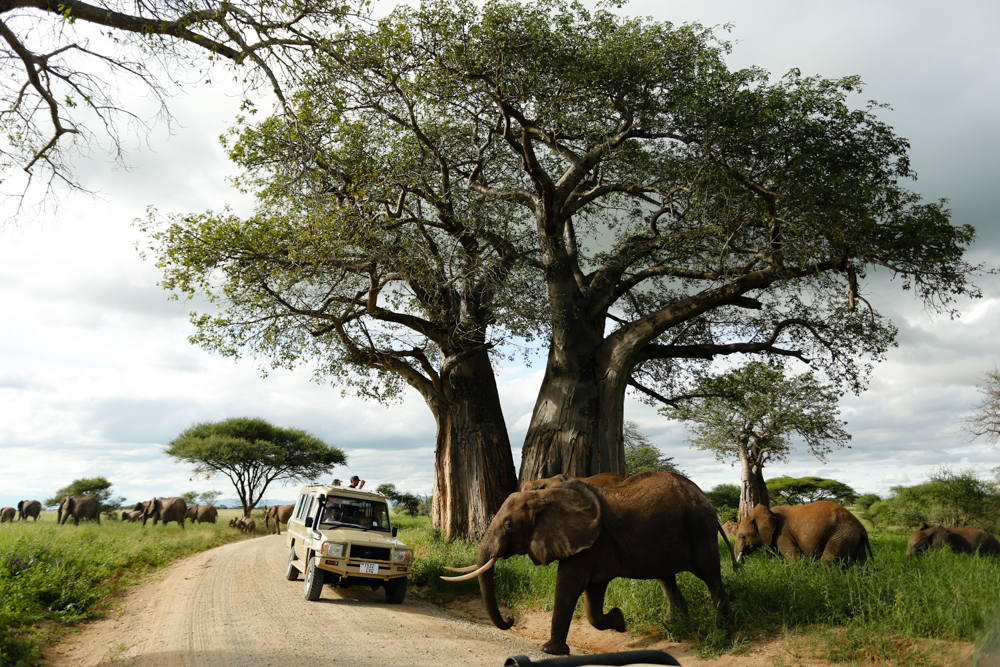
Tarangire national park stretches through an area of 2,850 square kilometers hosting a great ecological system ranging from vegetation, wildlife, bird life and termite moulds. Tarangire national park was first established in 1957 as a national reserve and in 1970 it was declared a national park, this park derives its name from the glorious Tarangire River which crosses through the park and bisects the park into two. Tarangire national park‘s landscape is dotted with the famous sun-blistered termite moulds, grassy savannah plains and swamps, the ecosystem and park itself is fed by Tarangire river which is the only permanent water source in Tarangire national park. Tarangire River attracts a huge population of animals who come to drink water most especially in dry season (June-November), a huge population of animals including over 3,000 elephants, wildebeests, zebras, impalas, gazelles come to the river in search for both water and green pasture.
Tarangire national park habits over 58 species of large mammals which are easily found in various regions of the park, the park experiences elephant annual migration which happens in the dry season (June – November). Elephant migration involves migration of over 3000 elephant individuals migrating into the park in search for water and green pasture, this spectacle is watched at River Tarangire and the plains of the park as they meander under baobab trees. Also a greatest concentration of animals outside the Serengeti ecosystem is witnessed in Tarangire national park as wildebeests, hartebeests, elands, impalas, zebras, buffalo crowd shrinking lagoons in search for water. Animals in Tarangire national park include leopards, lions, cheetah, elephants, buffaloes, wildebeests, hartebeests, elands, impalas, wild dogs, antelopes, fringe-eared Oryx, grant’s gazelles, vervet monkeys, banded mongoose, olive baboons, greater kudus and many more.
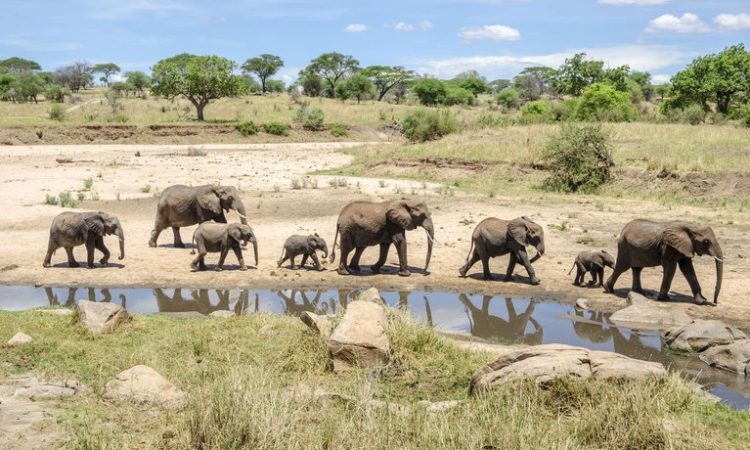
Tarangire national park is one of the important birding areas in Tanzania and best birding destination habiting more than 550 bird species, birds in Tarangire national park usually habit around swamps, woodlands and along the banks of Tarangire River. These birds include Hoopoes, hornbills, yellow-necked spur fowl, crested francolin, lilac-breasted rollers, stripped swallows, swifts, cordon bleus, owl’s plovers, bee-eaters, starlings, kori bustards, bateleur eagles, steppe eagles, tiny pygmy falcon, white-faced whistling ducks, red-billed teals and many more.
Tarangire national park is worldly famous for the magnificent Baobab trees, these trees are one of the largest trees on earth known by various names. Locally in Swahili local language Baobab trees are known as Mbuyu, other names of Baobab trees include rat tree, monkey-bread tree and bottle tree. Baobab trees feature an exceptional thick sturdy trunk and stunted root like branches, the whole tree of Baobab in Tarangire national park grows to the height of 30 meters high, with trucks reaching 11 meters in diameter and have a life span of 6000 years.
Safari activities to do in Tarangire national park
Game drives
Game drives are the most excellent safari experience offered in Tarangire national park, the park is a home to a huge concentration of animals and there is 5 routes that are Lemiyon route, Gursi route, Lamarku route, western Lake Barungi route and Kitibong hill route used on game drive experience. Game drives in Tarangire national park are offered as morning, afternoon and evening game drive, on this experience you are to spot numerous animals such as leopards, lions, cheetah, elephants, buffaloes, wildebeests, hartebeests, elands, impalas, wild dogs, antelopes, fringe-eared Oryx, grant’s gazelles, vervet monkeys, banded mongoose, olive baboons, greater kudus and many more.
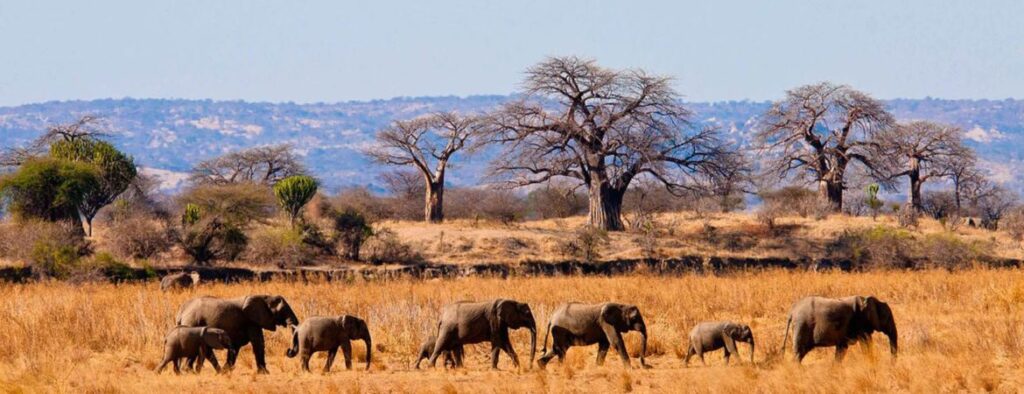
Bird watching
Tarangire national park is a haven for birds and a perfect destination for bird watching, the park is a home to more than 500 bird species including resident and migratory species. In Tarangire national park the best spot for viewing birds are savannah woodlands, swamps along Tarangire River and Lemiyon triangle situated in the northernmost end of the park, birds spotted on this experience include martial eagles, bateleur eagles, long crested eagles, spotted eagle owls, fish eagles, ostriches, great white pelicans, tawny eagles, white-faced whistling ducks, superb starlings, white headed babblers and many more.
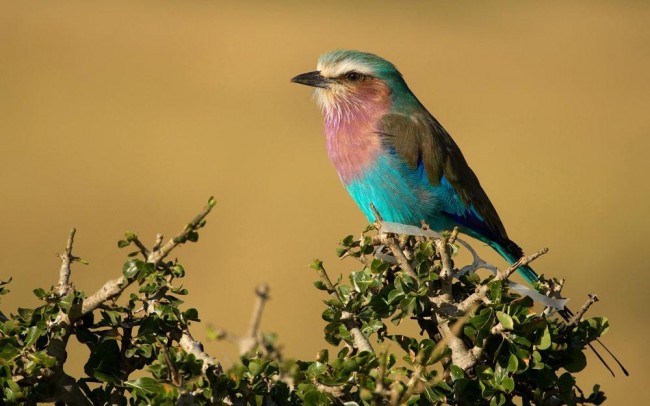
Nature walks
Tarangire national park offers excellent nature walks experience through the scenic landscape and various vegetation zones of the park, nature walks in the park are offered in morning and evening taking about 1-3 hours. This safari experience is an opportunity for tourists to encounter the magnificent baobab trees, a variety of birds in swamps such as Hoopoes, hornbills, yellow-necked spur fowl, crested francolin, lilac-breasted rollers, stripped swallows, swifts and a variety of animals as elephants, antelopes, lions and many more on the banks of Tarangire River.
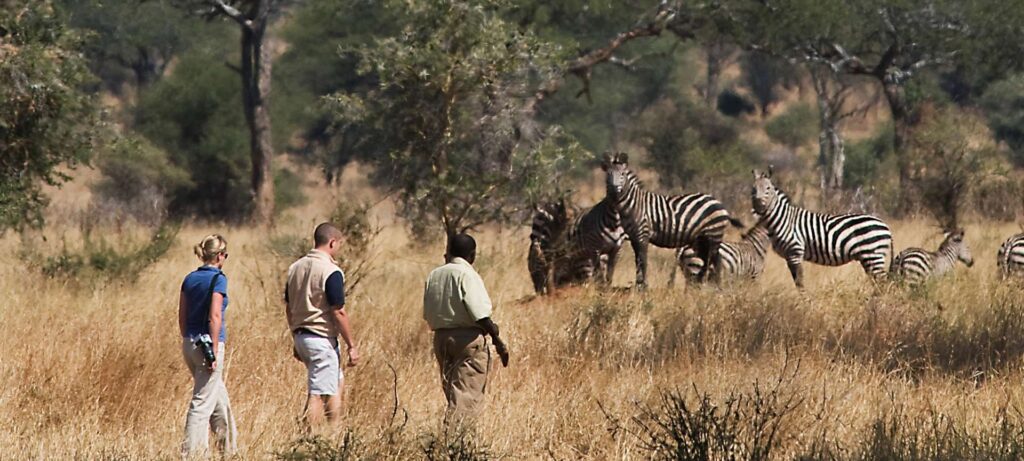
Sightseeing
Sightseeing in Tarangire national park is one of the most memorable safari activities, the park offers spectacular views of the nature consisting of the magnificent Baobab trees dotted around the park and numerous swamps such as Silale swamp. Silale swamp covering 30 square kilometers is a perfect sightseeing spot in the park as it offers sights of a variety of wildlife species such as zebras, gazelles, elephants and many bird species. Another amazing spot to visit in Tarangire national park is Tarangire river which is surrounded by huge baobab trees and swamps.
Cultural tours
Cultural tours in Tarangire national park offers an amazing encounter with the Masai tribal people and their unique culture, norms and traditions. The Masai communities are found along the boundaries of the park and the park itself is situated near Masai steep, on cultural tours you encounter the nomadic lifestyle of the Masai people, making of various local crafts such as beaded earrings, bangles, anklets and necklaces. The Masai people has a unique of constructing their houses which are in circular forms and have beautiful dressing code of color vibrant shukas which you will encounter while on cultural tours.
How to get to Tarangire national park
In Tarangire national park there is a wide range of accommodation establishments offering bed and other services to individuals on a safari in the park, these are categorized as Luxury, midrange and budget and they include Nimali Tarangire tented camp, Acacia Tarangire luxury camp, Sanctuary Swala camp, Lemala Mpingo ridge lodge, Ecoscience Science center and luxury lodge, Tarangire safari lodge, Tarangire Sopa lodge, Ang’ata Tarangire camp, Kikoti tented camp, Sangaiwe Tented lodge, Tarangire Osupuko Lodge, Maramboi tented lodge, Kirurumu Tarangire lodge, Whistling thorn tented camp and many more.
Where to stay in Tarangire national park
Tarangire national park is located in the northern safari circuit and easily visited through routes connecting to Ngorongoro crater and Serengeti national park, most safaris to Tarangire national park being from Arusha city and both road and air means of transport are used to get to the park. From Arusha city public and private vehicles are available connecting to the park, by air means chartered flights are offered from Arusha Airport to Kilimanjaro international airport .


